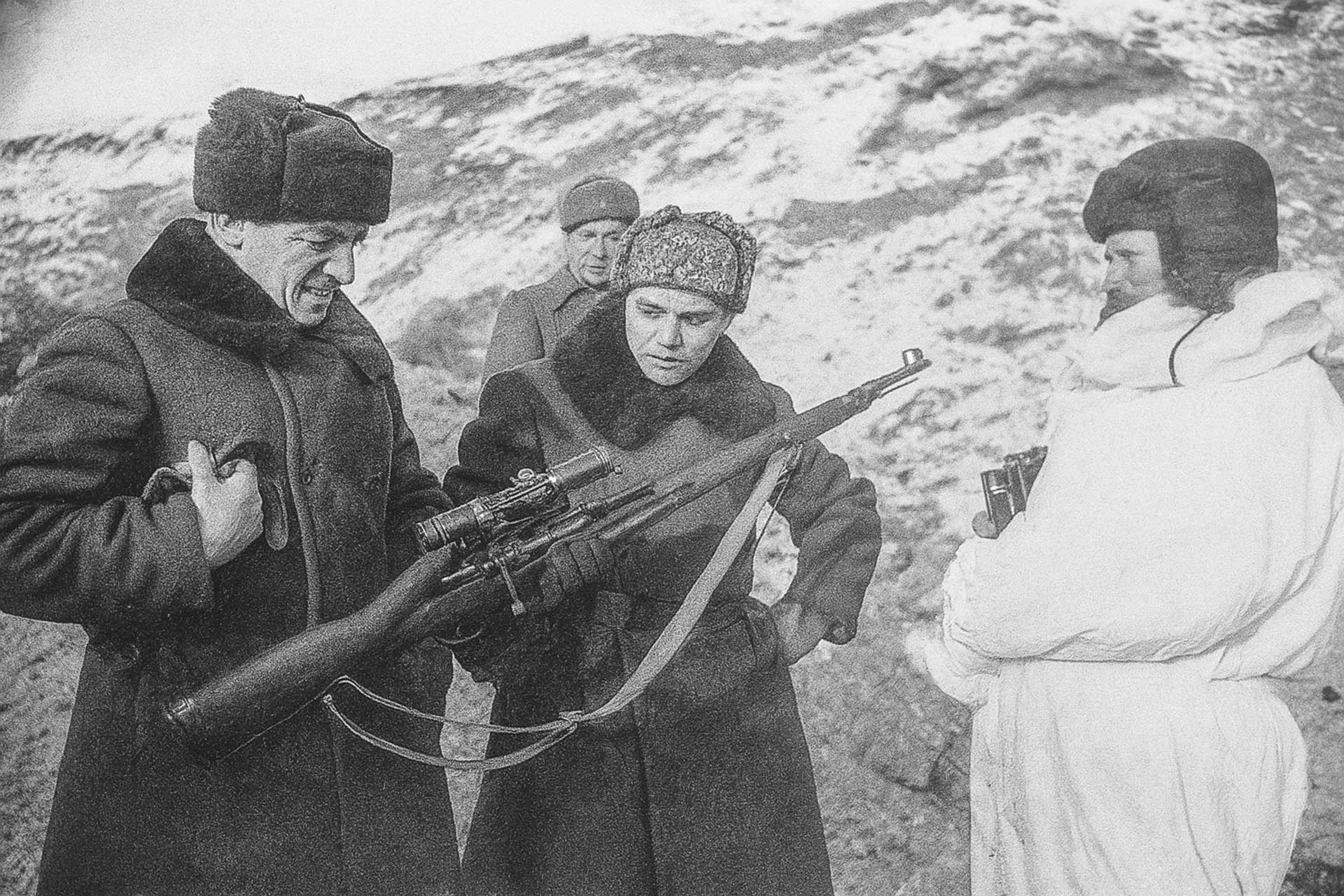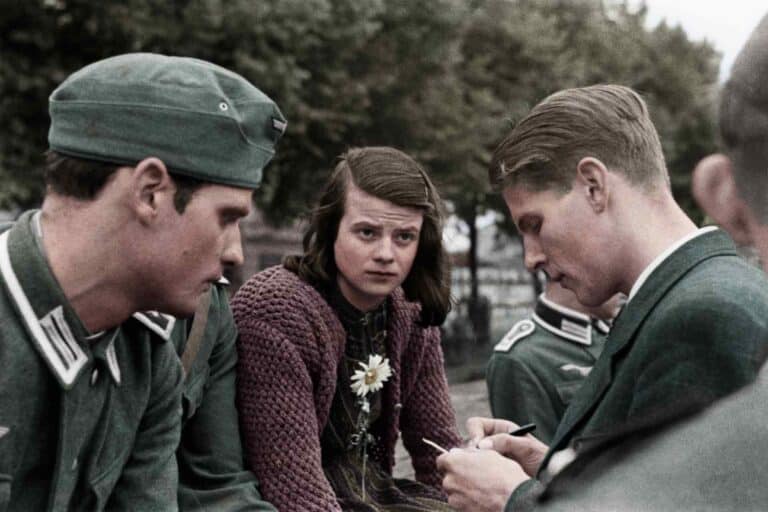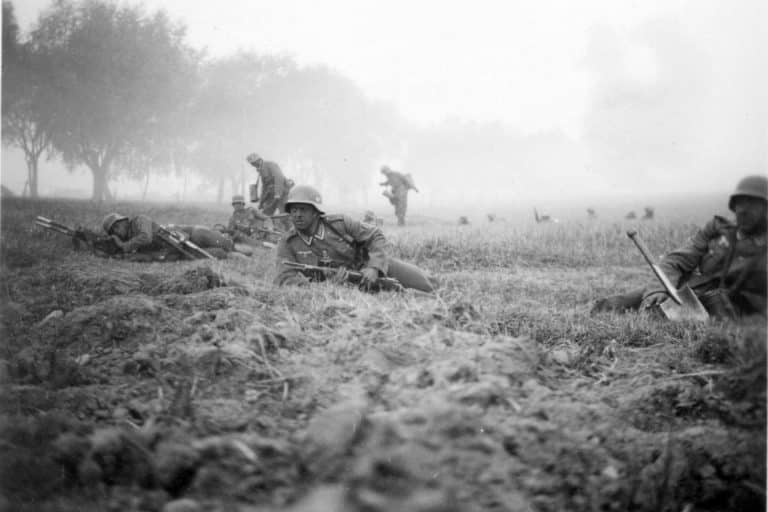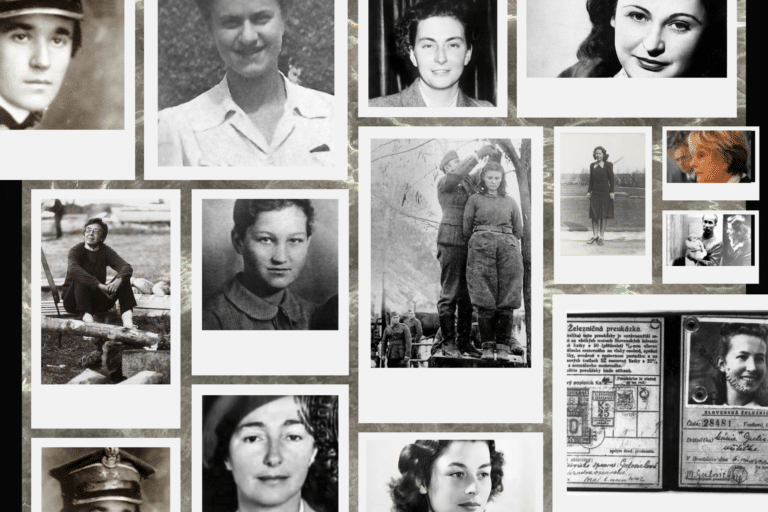Inside the Legendary Sniper Duels of Vasily Zaytsev
Amid the rubble-strewn streets of Stalingrad, Vasily Zaytsev became the embodiment of tenacity in the face of adversity. As the city descended into a labyrinth of shadow and ruin during the winter of 1942, conventional warfare was supplanted by a deadly game of cat and mouse. Clutching his trusted Mosin-Nagant rifle, honed through years spent hunting in the Ural Mountains, Zaytsev took up the mantle of sniper. He became a veritable sharpshooting specter, reportedly dispatching over 200 German soldiers and tipping the scales of battle one round at a time.
Zaytsev’s sniper duels transcended mere military engagements, etching themselves into the annals of folklore, most notably his showdown against a crack German marksman tasked with his elimination. These one-on-one confrontations catapulted him to national and international fame. The veracity of some of these duels remains the subject of debate, but their psychological impact on both friend and foe was immeasurable. Zaytsev wasn’t just sniping for territory—he was sniping for morale, embodying the notion that calm nerves and a steady hand could hold their own against the machinery of a modern war machine.
Who Was Vasily Zaytsev?
Vasily Zaytsev was born on March 23, 1915, in Yeleninskoye, a small village located in the Ural Mountains region of Russia. Coming from a peasant family, he spent his early years in an area characterized by dense forests and vast open spaces. As a child, Vasily was taught to hunt by his grandfather. They would often stalk deer and wolves armed with a single-shot rifle, developing a deep patience, precision, and tracking skills. These early experiences would later become the foundation of his legendary reputation.

Growing up, a great deal of importance was placed on survival and discipline. Rural life in Russia meant that one had to be self-reliant at a very early age. Zaytsev had already proven himself as a sharpshooter by his teenage years. Hunting in the Ural Mountains was both a tradition and a way of life; his environment became his training ground. This profound connection with nature and his focus on developing his skills were factors that would contribute to his unshakeable calm under pressure.
Before the war, Vasily Zaytsev worked as an accountant. He was employed as a clerk within the Soviet Navy, serving in the administrative department of the Pacific Fleet. Although far removed from the front lines, his disciplined nature and background did not go unnoticed by his superiors. However, as the European conflict escalated, Zaytsev grew increasingly restless in his office-bound position.
In 1942, he made the decision to volunteer for transfer to a frontline unit. Leaving behind the relative safety of his clerk position, he embraced the perils of infantry life. The transition from a peaceful naval clerk to a combat soldier was both rapid and resolute. This decision would set in motion a series of events that would change Zaytsev’s life forever, leading him down the path to becoming one of World War II’s most celebrated snipers.
The Rise of the Soviet Sniper Corps
As the Eastern Front shifted into close-quarters combat within urban environments, the Soviet command quickly grasped the potential of snipers. Traditional artillery and tank assaults were less effective in these fragmented landscapes of half-collapsed buildings and narrow alleyways. Snipers, by contrast, were able to halt entire enemy units in their tracks, disrupt supply lines and, with one shot, turn an hour of relative calm into panic. Each bullet found its target, snipers would hide for hours, and the streets and ruined houses were transformed into killing fields where it was a case of “dog eat dog.” Their ability to selectively neutralize targets also made snipers a force multiplier, particularly when they were well-trained and able to exploit the terrain.
It was during this stage of the war that Vasily Zaytsev came to public attention. Armed with a standard Soviet Mosin-Nagant rifle, the young Soviet sniper would claim more than 30 confirmed kills in the first few days of the battle, well before his sniper duel against a German marksman made him a household name. Zaytsev understood how to exploit the urban environment. He could remain in a single position for hours on end and ambush his targets from the most unexpected angles. He chose his targets with care, focusing not only on foot soldiers but also on officers and machine gunners.

Soon, Zaytsev was tasked with forming a sniper group within his regiment. In his own words, “I was ordered to train riflemen myself. The division commander explained to me that the battalion already had hunters, and that a hunter, as a rule, can kill a gopher, but he does not yet have that culture in killing a man.” As head of the sniper school, Zaytsev drew on his experience as a hunter to instruct trainees on how to read the landscape, camouflage, and take up concealed positions in pairs.
His focus on patience and discipline over aggression helped even novice snipers succeed in the challenging urban environment. Many of his students went on to become accomplished snipers in their own right
As important to Zaytsev as his own achievements was the ability to train other snipers. He understood the importance of his craft could outlive any single marksman. By taking on this additional role, Zaytsev’s impact was multiplied as the dozens of snipers he trained would go on to claim their own kills. Zaytsev’s sniper school produced some of the most effective snipers on the Eastern Front, magnifying his own legend far beyond what he could achieve alone.
The sniper corps, led by individuals like Zaytsev, became an indispensable part of Soviet military strategy. Their ability to slow enemy advances, protect key positions, and turn the psychological tide of battle was immeasurable. The rise of the sniper was not only a tactical innovation but a cultural one. Soviet propaganda of the era lionized snipers as the true heroes of the people, making them a symbol of the discipline, patience, and deadly resolve that embodied the Soviet spirit.
The Soviet Union’s investment in training and deploying snipers proved to be one of its most successful endeavors of the war. Through Zaytsev’s leadership and the establishment of sniper training schools, the Soviet Union had created one of the most effective sniper forces of the conflict. It began out of necessity in the shattered cities of the Eastern Front, but it would become an integral part of Soviet battlefield doctrine long after the war was over.
Stalingrad and Urban Warfare
By the autumn of 1942, the city of Stalingrad had become a hellhole of modern urban combat. The industrial metropolis along the banks of the Volga had been reduced to a smoking ruin of twisted metal and rubble-strewn streets. German soldiers under the command of General Friedrich Paulus were determined to capture the city. Soviet defenders, led by General Vasily Chuikov, were no less determined to hold it. The city’s streets changed hands many times, often block by block, and sometimes daily. Snipers were better at this than almost any other type of soldier.
Stalingrad became a battlefield and a sniper’s paradise for Vasily Zaytsev. Ruined factories, apartment buildings and other debris provided the perfect place to hide. Armed with a powerful sniper rifle and the skills he had learned in his native Ural Mountains, Zaytsev stalked through the city undetected. His strength as a sniper lay in his ability to camouflage himself and his patience. The Soviet marksman often crawled through sewers and hid in empty barrels while searching for the perfect vantage point from which to fire. Zaytsev became a legend for his skill in killing Germans behind enemy lines. However, his skills did not go unnoticed by the German high command.

The Legendary Duel with Major Erwin König
The duel most commonly associated with the snipers of the Battle of Stalingrad is that of Vasily Zaytsev and a German marksman known only as Major Erwin König. Soviet accounts of the battle named König as a high-ranking officer who had been sent to Stalingrad on a special mission: the head of a sniper school in Berlin, his task was to kill Vasily Zaytsev. The name and rank of König are often repeated in Soviet literature and the memoirs of Zaytsev, but there is no confirmation of the German records of the existence of this officer.
The lack of documentary evidence of the duel has made historians question whether it actually took place and whether König was one person, a collective name for several snipers, or a legend created by Soviet propaganda.
Zaytsev’s memoirs described the duel lasting more than three nerve-wracking days in the bombed-out buildings of Stalingrad. The duelists were both skilled veterans, with nerves of steel and a deep understanding of camouflage and concealment. Zaytsev claims that he used a dummy helmet and a spotter to attract the German sniper out of hiding. When he noticed a flash of light from the periscope hidden under a metal plate on the enemy’s helmet, Zaytsev pulled the trigger. The bullet, he wrote, killed König on the spot, and the deadly duel was over.
In addition to a tactical achievement, the duel became a symbolic one. In a war of attrition, fear, and close-quarters horror, the death of a supposedly elite German sniper inspired the Soviet troops. Vasily Zaytsev became a legend not only because of his marksmanship but also because he symbolized the tenacity of the Soviet defenders. In his memoirs, this event was described as one of the turning points of the battle, foreshadowing the bloody struggle of the Red Army against the mighty, precise, and methodical Wehrmacht.
The duel had a considerable effect on the psychological warfare between the snipers. Each side had to try to predict the other’s actions, all the time trying not to expose their own location. Hours of waiting, dummy figures in the rubble, and feints to provoke fire characterized the duel. It was less a contest of speed than a contest of endurance and deception – qualities that Zaytsev had learned in his youth hunting in the Urals.

The ongoing mystery of König’s identity is unlikely to be solved, as the story of the duel has long taken on mythological proportions. Soviet propaganda and media promoted the duel during and after the war, and it later appeared in a series of books and films about Stalingrad, including Enemy at the Gates. Whether a historical fact or a legend with a grain of truth, it was one of the most poignant examples of the sniper’s role in the battle and the bloody and muddy nature of Stalingrad.
In the end, it was one bullet and one name that survived, and the story of Zaytsev against König has left an indelible mark. A duel of shadows and patience, it’s a story that shows that in war, it’s not just about numbers or firepower. In the vastness of a cold and silent city, skill, cunning, and the will to win are what win – and what remain long after the dust has settled.
Other Notable Duels and Urban Tactics
Although the duel with Major Erwin König is the most famous of all, Vasily Zaytsev had many encounters with other talented enemy snipers during the fighting in the streets and alleys of Stalingrad. Each of them not only checked the shooter’s accuracy but also their patience and perception of the environment. Zaytsev confirmed more than 200 kills. Most of these were skilled marksmen specially sent by the Germans to combat the growing number of Soviet snipers. For different snipers, the battle continued for minutes or days in the hazy dance of life and death and stalking behind walls and debris.
To better organize, Vasily Zaytsev and the other Snipers operating in the city created sniper teams called “sixes.” They were made of three soldiers: two spotter teams and one shooter. The former were responsible for tracking movement, performing range estimation, and engaging the enemy if needed. In return, the sniper was entirely focused on the target. This system, as well as many other concepts Vasily Zaitsev utilized, would help improve the overall Red Army sniper training.
The Stalingrad battlefield, with its shattered and open environment, was a sniper’s paradise. Gunports, shadows, and light cutting through the ruins gave incredible opportunities for skilled marksmen. Vasily Zaytsev is known for his ambushes on the grain elevator. A large building in the heart of Stalingrad that had complete oversight over all supply routes at the time. But he also fought at the Red October factory, where twisted steel and debris created both hindrances and cover. These buildings have become almost legendary, as every crack and window in Stalingrad could hide a rifle.
Vasily Zaytsev and his units also often had to switch from one ambush position to another under the cover of darkness. Setting fake sniper nests and inviting enemy fire to reveal the enemy shooters was a common trick in the urban combat environment, where the battlefield changed daily. In one of his reports, Vasily Zaytsev even described crawling on his belly through the battlefield that was covered in corpses.
Another of Vasily Zaytsev’s many techniques that contributed to his success was his understanding of his opponents’ psychology. The Soviets were aware that the German snipers were using the same tactics that they themselves were. For this reason, Zaytsev would constantly change his points of fire, disguise his movements, and use any architectural feature —even the tiniest nook or cranny— to mask his approach.
But Vasily Zaytsev’s sniping legend in Stalingrad is not only about his personal kills. He has set the foundation for later Soviet sniping tactics and his overall urban warfare and sniper team formations would become the basis of Soviet sniper training. By seeing every window and doorway of Stalingrad as a potential battlefield and every enemy sniper as a personal opponent, Vasily Zaytsev created one of the most successful sniper operations in the history of modern warfare.
Myth vs. Reality
Soviet propaganda during World War II also significantly exaggerated the legend of Vasily Zaytsev. His exploits were widely shared in newspapers and radio broadcasts, serving as a tool to encourage and inspire fellow Soviet citizens. The sniper duel with König was depicted as a testament to Soviet superiority and heroism. It became an iconic tale illustrating how the average Soviet soldier’s determination could triumph over Nazi Germany’s technological might. The story of Zaytsev was more than history; it was a morale-boosting weapon.
As Vasily Zaytsev describes it, the infamous sniper duel unfolded over several days. According to his account, he tracked König by the reflection of the scope and eventually lured the German sniper into a deadly cat-and-mouse game, culminating in Zaytsev’s victory. While the lack of independent corroboration for his account raises questions about specific details, there is little doubt about Vasily Zaytsev’s skill as a sniper. The fear he instilled in enemy soldiers was very real, whether or not Erich König ever drew a breath.
Today, many historians take a more nuanced view of the König duel. Some believe it was based on a real encounter but exaggerated for propaganda purposes. Others argue that it was a complete fabrication, a dramatic addition to Zaytsev’s already legendary reputation. Evidence against the duel includes König’s absence from German military archives, discrepancies in dates and reported events, and the challenge of finding witnesses over seven decades later. On the other hand, historians also point out that many wartime records were lost or destroyed, and elite snipers were often expected to keep their exploits secret.
Whether or not the duel between Zaytsev and König is provable, the story itself speaks to larger truths about warfare and narrative. Battles are remembered not just for their strategic importance or factual details but also for the emotions they evoke and the symbols they create. In this sense, the Zaytsev-König legend has already won a place in World War II mythology. The story of two snipers waging their war from afar captures the desperation, ingenuity, and human drama that characterized the Eastern Front.
Vasily Zaytsev remains famous not only because of his skills as a sniper. In part, his legend continues to live on because of the fluidity between fact and fiction surrounding his story. Whether or not every detail is factual, the larger picture remains powerful: a young man from the Urals who became a symbol of Soviet resistance in one of history’s bloodiest battles. That legacy, mythologized or not, remains potent to this day.

Legacy of Zaytsev’s Duels
Vasily Zaytsev’s encounters in Stalingrad had a lasting impact on the tactics and training of snipers in modern warfare. His emphasis on camouflage, patience, and the use of “six” teams—two spotters for one shooter—became standard sniper doctrine. Zaytsev’s focus on mental resilience and terrain has also helped to transform sniping from a specialized skill to a an ordinary infantry skill, particularly in urban combat. His legacy is preserved in military training programs and continues to be a subject of study in sniper schools worldwide.
Vasily Zaytsev’s fame reached far beyond the combat zones of World War II. His legendary duel was chronicled in books and documentaries, and he became a central figure in the 2001 film “Enemy at the Gates.” While the movie took liberties with historical accuracy, it brought his name to a global audience and sparked a renewed interest in the battles of the Eastern Front. The veracity of some aspects of his story is debated, but Zaytsev’s image as a symbol of determination and tactical genius remains a fixture in pop culture.
After the war, Zaytsev served in the Soviet military and later worked in the civilian sector. He was awarded the title Hero of the Soviet Union and received numerous bravery medals for his service during World War 2. Despite losing the use of his eye at Stalingrad, he miraculously regained his vision post-surgery and returned to active duty. He passed away in 1991, on the eve of the Soviet Union’s dissolution, and was buried with military honors. In 2006, his remains were moved to Volgograd (formerly Stalingrad), in accordance with his wishes.
Vasily Zaytsev’s sniper duels were not just isolated incidents of marksmanship; they were episodes that captured the high stakes of a global conflict. His life story is a unique blend of courage, skill, and myth that has resonated across cultures and political boundaries. Today, his legacy is not just a narrative of a single marksman but a reflection of how rigorous training, nerve, and vision can alter the course of history from the periphery.







